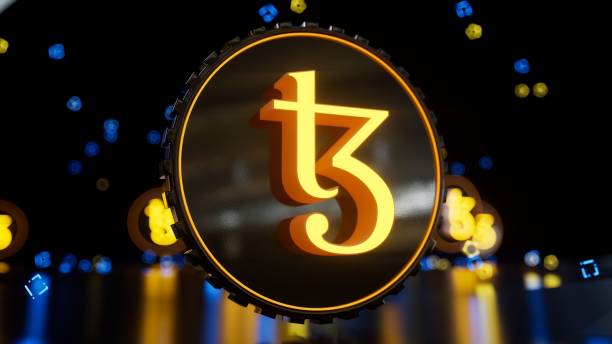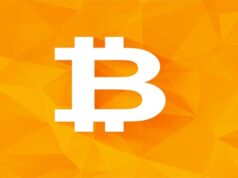
Cryptocurrencies have revolutionized the financial landscape, offering decentralized and secure digital transactions. Among the various blockchain platforms, Tezos stands out as a groundbreaking technology that empowers self-amending cryptocurrencies. In this article, we delve into the intricacies of Tezos, exploring its unique features, benefits, and potential impact on the future of finance. By harnessing the power of self-amendment, Tezos aims to create a robust and adaptable blockchain ecosystem. Quantum XBT is an excellent resource for beginners who want to learn and understand the dynamics of the cryptocurrency market.
Understanding Tezos
What is Tezos?
Tezos is an open-source blockchain platform designed to facilitate smart contracts and decentralized applications (DApps). It was created by Arthur and Kathleen Breitman, combining their backgrounds in mathematics, computer science, and finance. Tezos stands out from other blockchain platforms due to its self-amendment capability, enabling it to upgrade and adapt over time without the need for hard forks.
Self-Amendment: A Game-Changer in the Blockchain Space
Traditional blockchain platforms often face challenges when implementing protocol upgrades. Disagreements among developers and stakeholders can lead to contentious hard forks, resulting in multiple competing chains. Tezos addresses this issue through a unique governance model that allows stakeholders to propose and vote on protocol upgrades directly. This self-amendment process enables the Tezos blockchain to evolve smoothly and maintain consensus without disrupting the network.
Key Features and Benefits of Tezos
Formal Verification
One of Tezos’ notable features is its support for formal verification. This rigorous mathematical technique ensures that smart contracts and DApps are free from bugs and vulnerabilities. Formal verification enhances security, reduces the risk of exploits, and instills trust in the platform.
On-Chain Governance
Tezos introduces on-chain governance, allowing token holders to actively participate in the decision-making process. Through a voting mechanism, stakeholders can propose and approve amendments, making Tezos a truly decentralized and community-driven platform. This democratic approach ensures a fair and inclusive ecosystem.
Liquid Proof-of-Stake (LPoS)
Tezos utilizes a consensus mechanism called Liquid Proof-of-Stake (LPoS). LPoS enables token holders to delegate their tokens to validators, who secure the network and validate transactions. By participating in the staking process, token holders can earn rewards and actively contribute to the network’s security and consensus.
Upgradability and Scalability
The self-amendment capability of Tezos allows for seamless protocol upgrades, enabling the platform to adapt to evolving technologies and user needs. This flexibility ensures that Tezos remains at the forefront of innovation while maintaining backward compatibility. Additionally, Tezos implements a layered architecture that enhances scalability and throughput, enabling a growing number of transactions per second.
Smart Contract Compatibility
Tezos supports smart contracts, making it a suitable platform for developers to build decentralized applications. The platform’s programming language, Michelson, offers secure and formal verification-friendly coding, empowering developers to create reliable and robust smart contracts.
The Potential of Tezos in the Financial Landscape
Tezos’ unique features and self-amendment capability have the potential to revolutionize the financial landscape in several ways:
Improved Security and Trust
By embracing formal verification, Tezos enhances the security and trustworthiness of smart contracts and DApps. This is especially crucial in financial applications, where accuracy and reliability are paramount. Tezos’ commitment to rigorous testing and verification processes mitigates the risk of vulnerabilities and potential exploits.
Efficient Governance and Consensus
Tezos’ on-chain governance model empowers token holders to actively participate in decision-making, ensuring a fair and democratic platform. By involving the community in the upgrade process, Tezos fosters consensus and reduces conflicts that can hinder progress. This governance approach sets a precedent for other blockchain projects, encouraging more inclusive and transparent practices.
Adaptability and Innovation
With its self-amendment capability, Tezos can quickly adapt to emerging technologies, market demands, and regulatory changes. This flexibility allows Tezos to stay ahead of the curve and maintain relevance in a rapidly evolving industry. By continuously evolving, Tezos aims to provide a future-proof blockchain infrastructure for diverse use cases.
Financial Inclusion
Tezos’ user-friendly development environment and governance model enable a broader range of individuals and organizations to participate in the blockchain ecosystem. By lowering barriers to entry, Tezos promotes financial inclusion, empowering developers, entrepreneurs, and users worldwide to leverage the benefits of decentralized finance.
Conclusion
Tezos represents a groundbreaking advancement in the blockchain space, offering self-amendment as a solution to challenges faced by traditional platforms. Through its unique governance model, Tezos empowers the community to actively participate in the platform’s evolution. With features like formal verification, on-chain governance, and adaptability, Tezos demonstrates its potential to reshape the financial landscape.
As the world embraces blockchain technology, Tezos stands at the forefront, driving innovation and enabling the creation of self-amending cryptocurrencies. Its commitment to security, governance, and scalability positions Tezos as a promising platform for developers, businesses, and individuals seeking to leverage the potential of decentralized technologies.


































